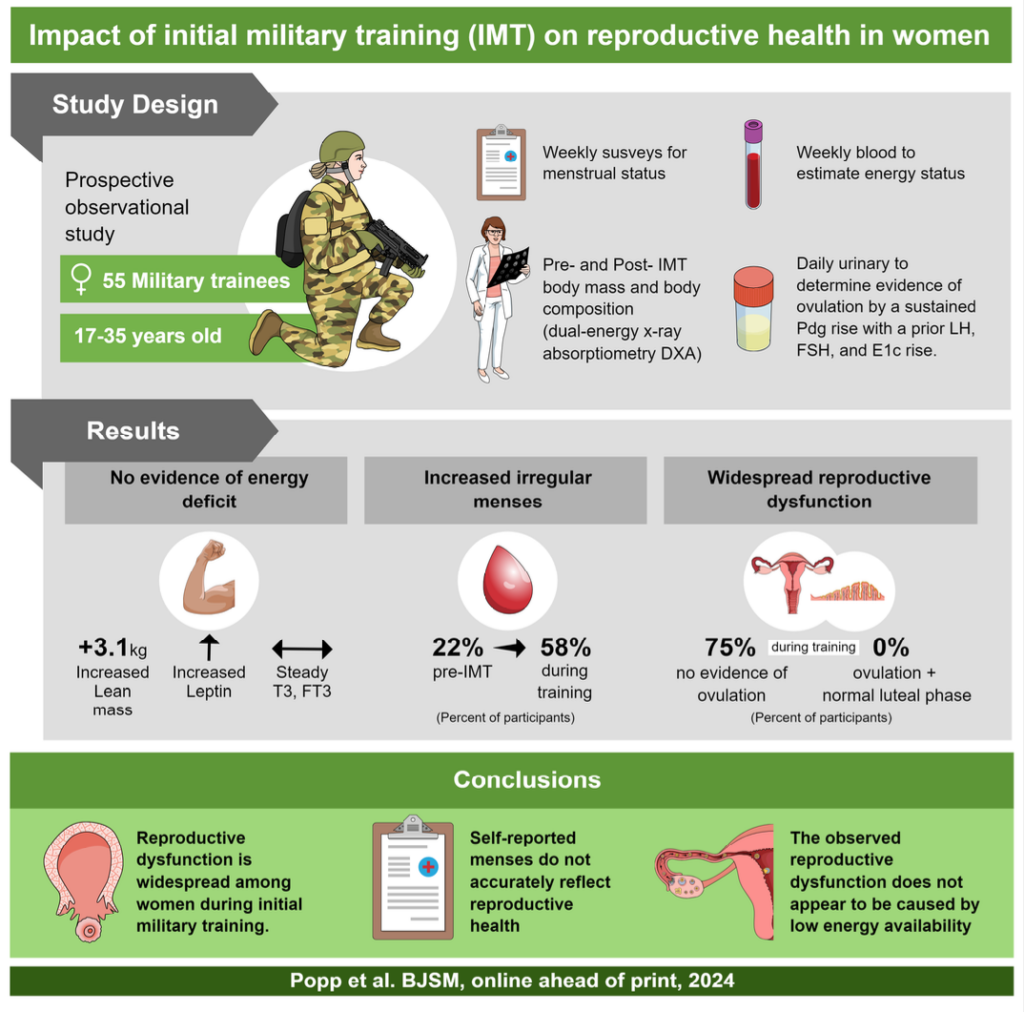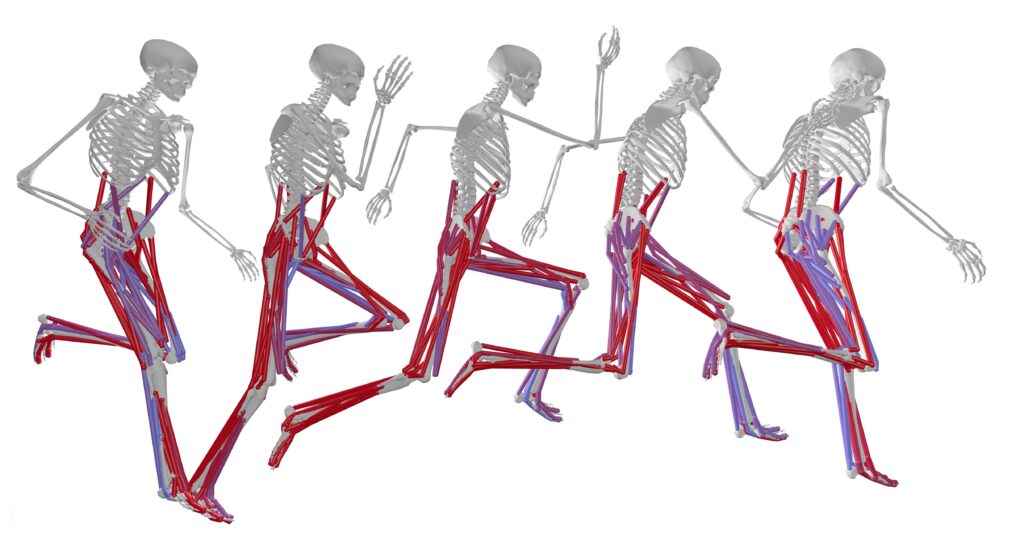Female trainees at risk of reproductive dysfunction during U.S. Army basic combat training
Collaborators

A new study sheds light on the potential reproductive health issues U.S. military female trainees face during U.S. Army Basic Combat Training (BCT). Rather than just relying only on self-reported menstrual cycles, lead author Kristin Popp, Associate Director of Research at the Wu Tsai Human Performance Alliance Female Athlete Program at Boston Children’s Hospital, and her colleagues at the U.S. Army Research Institute of Environmental Medicine tracked daily hormone measurements over 10 weeks and found widespread reproductive dysfunction in trainees, even among those who reported normal menstrual cycles.

Previous research on reproductive health in military trainees has typically relied on self-reported data, which can limit accuracy. This new study, however, used daily hormone measurements from urine samples over 10 weeks to get a clearer picture of their reproductive health. Blood samples were also collected weekly to assess energy availability and stress.
Published in the British Journal of Sports Medicine, the study found that, despite reports of normal menstrual cycles, trainees’ hormone profiles showed suppression of the hypothalamic-pituitary-ovarian (HPO) axis. The HPO axis is a system that controls ovulation and menstrual cycles. Most participants also lacked the progesterone surge needed for normal ovulation and reproductive health. Why does this matter? Suppression of the HPO axis can lead to long-term health issues, including infertility, weakened bones, and a higher risk of heart disease.

Shown with permission from Kristin Popp.
These findings highlight a critical gap: self-reported menstrual health often does not reflect the true state of reproductive health. The study suggests that factors beyond low energy availability – such as increased cortisol and reduced sleep during training – may contribute to this suppression. However, more research is needed to understand these factors fully.
This study was funded by the Military Operational Medicine Research Programme, US Army Medical Research and Materiel Command. This research was also partly supported by appointments to the Department of Defense Research Participation Programme at the US Army Research Institute of Environmental Medicine administered by the Oak Ridge Institute for Science and Education.
Co-authors include: Brittany N Bozzini, Marinaliz Reynoso, Jennifer Coulombe, Katelyn I Guerriere, Susan P Proctor, Colleen M Castellani, Leila A Walker, Nicholas Zurinaga, Katherine Kuhn, Stephen A Foulis, Mary L Bouxsein, Julie M Hughes, Nanette Santoro.
Female Training Image Credit: Canva Pro Images
Latest News

September 23, 2025
In sprinting, where the foot lands may be key to speed

September 17, 2025
Cyclists with similar power use different muscle strategies

September 15, 2025
A new framework for trusting modeling predictions in biology
Get Engaged
Join our mailing list to receive the latest information and updates on the Wu Tsai Human Performance Alliance.
